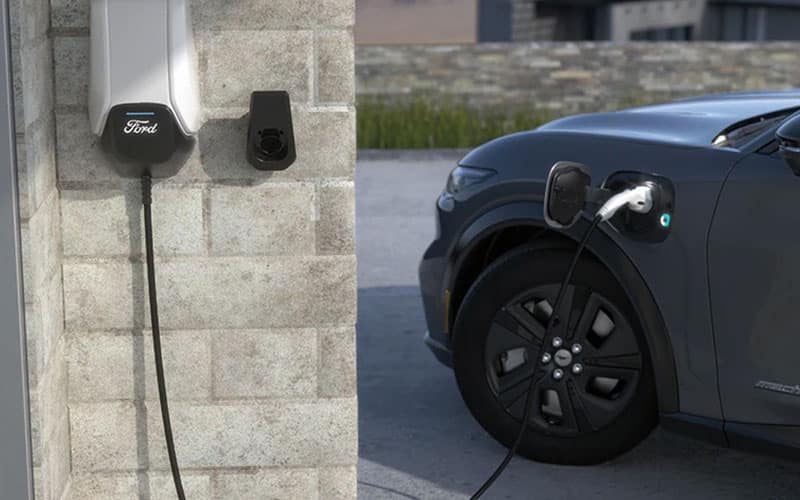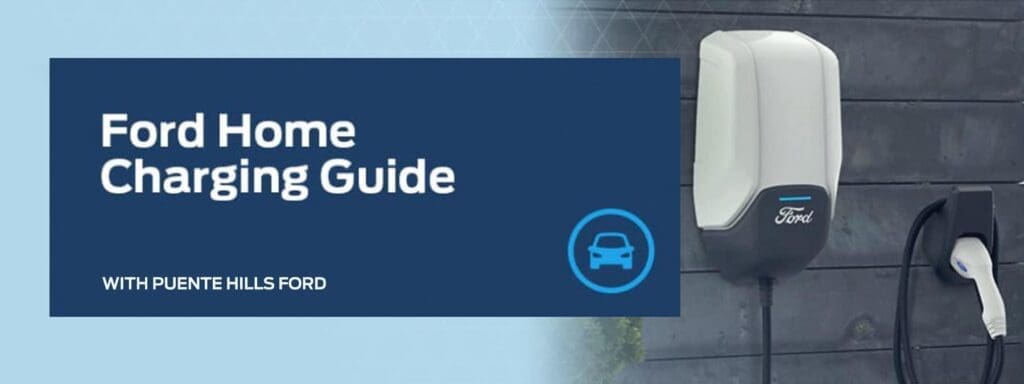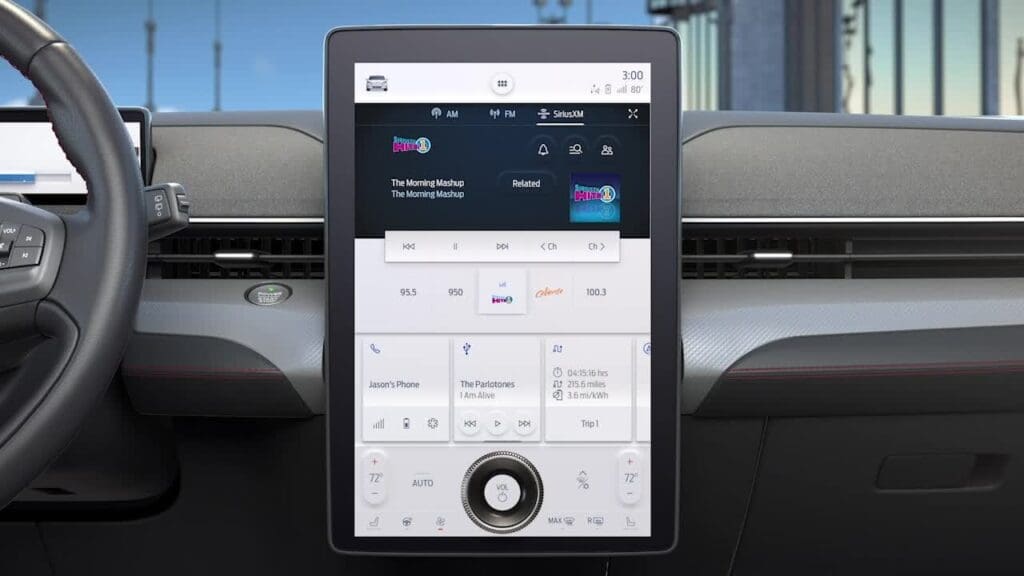Are you the proud owner of a Ford Electric Vehicle? Well, you’re in luck! This article serves as the ultimate guide to charging your Ford Electric Vehicle right from the comfort of your own home. With the increasing popularity of electric vehicles, it’s essential to know the ins and outs of charging in order to maximize your driving experience. So, grab your charging cable and get ready to unlock the full potential of your Ford Electric Vehicle!

1. Understanding the Basics of Charging
1.1 The Importance of Home Charging
Home charging is a crucial component of owning an electric vehicle (EV). It allows you to conveniently recharge your Ford electric vehicle at your own home, eliminating the need for frequent trips to public charging stations. Not only does this save you time and money, but it also ensures that your vehicle is always ready for your next adventure. Home charging provides the convenience and peace of mind that comes with owning an EV.
1.2 Types of Charging Levels
When it comes to home charging, there are three types of charging levels: Level 1, Level 2, and Level 3 (also known as DC fast charging). Level 1 charging is the slowest option, using a standard household outlet and providing about 2-5 miles of range per hour of charging. Level 2 charging is faster and requires a dedicated 240-volt circuit. With Level 2 charging, you can expect to get around 12-40 miles of range per hour of charging. Finally, Level 3 charging is the fastest option, capable of delivering up to 150 miles of range in just 30 minutes. However, Level 3 charging typically requires specialized charging equipment and is not typically installed at home.
1.3 Charging Connector Types
There are several different types of charging connectors that are commonly used for EV charging. The most common types are the SAE J1772 connector, which is used for Level 1 and Level 2 charging, and the CCS (Combined Charging System) connector, which is used for Level 3 DC fast charging. Some Ford electric vehicles may also be equipped with a Tesla connector, which allows for compatibility with Tesla Superchargers. It is important to ensure that you have the correct charging connector for your specific Ford electric vehicle to ensure efficient and safe charging.
2. Preparing Your Home for EV Charging
2.1 Evaluating Your Electrical System
Before installing a home charging station, it is important to evaluate your electrical system to ensure that it can support the additional electrical load. Start by checking your electrical panel to determine the available capacity and the type of circuit breaker currently installed. You may need to consult with a licensed electrician to assess the capacity of your electrical system and determine if any upgrades are necessary.
2.2 Upgrading Your Electrical System
In some cases, upgrading your electrical system may be necessary to support the installation of a home charging station. This could involve upgrading your electrical panel to a higher capacity, installing a new circuit breaker, or upgrading the wiring in your home. It is crucial to consult with a licensed electrician to ensure that any electrical upgrades are done safely and to code.
2.3 Installing a Dedicated Circuit
To ensure optimal charging performance and safety, it is recommended to install a dedicated circuit for your home charging station. A dedicated circuit means that the charging station is the only electrical device connected to that circuit. Installing a dedicated circuit helps prevent electrical overload and ensures that your vehicle receives a consistent and reliable source of power.
2.4 Choosing the Right Charging Station
Once you have evaluated your electrical system and installed a dedicated circuit, it is time to choose the right charging station for your Ford electric vehicle. Consider factors such as the charging speed, connector compatibility, and any additional features or smart charging capabilities that may be important to you. It is always a good idea to consult your vehicle’s owner’s manual or reach out to a Ford dealership for guidance on selecting the appropriate charging station for your specific model.
3. Installing a Home Charging Station
3.1 Determining the Location
When installing a home charging station, it is important to carefully consider the location. Ideally, the charging station should be located in a convenient and easily accessible area of your home, such as a garage or driveway. It is also important to ensure that the location allows for proper ventilation and protection from the elements.
3.2 Considerations for Outdoor Installations
If you plan on installing your charging station outdoors, there are a few additional considerations to keep in mind. Make sure the charging station is installed in a location that is protected from extreme weather conditions, such as direct sunlight, rain, or snow. You may also need to consider additional measures to protect the charging station from theft or vandalism.
3.3 DIY vs. Professional Installation
While some homeowners may be comfortable with a DIY installation, it is highly recommended to hire a licensed electrician or a professional installer to ensure a safe and proper installation. Installing a home charging station involves electrical work, and it is crucial to follow all local electrical codes and regulations to ensure the safety of yourself and your home.
3.4 Steps for Installation
The exact steps for installing a home charging station may vary depending on the specific charging station model and your electrical setup. However, here is a general overview of the installation process:
- Consult the installation manual provided by the manufacturer of your charging station.
- Turn off power to the electrical panel and install the appropriate circuit breaker for the charging station.
- Mount the charging station on a suitable surface, ensuring proper ventilation and protection.
- Connect the wiring from the charging station to the circuit breaker.
- Install the correct charging connector to the charging station following the manufacturer’s instructions.
- Test the charging station to ensure it is functioning properly.
- If you are unsure about any step of the installation process, it is always best to consult with a licensed electrician or professional installer.
4. Understanding Charging Speed and Times
4.1 Factors Affecting Charging Speed
The charging speed of your Ford electric vehicle can be influenced by several factors. The capacity of your home charging station, the charging level (Level 1, Level 2, or Level 3), the state of charge of your vehicle’s battery, and the ambient temperature can all impact the charging speed. It is important to be aware of these factors to estimate how long it will take to fully charge your vehicle.
4.2 Calculating Charging Times
Calculating charging times can be done by dividing the capacity of your vehicle’s battery by the charging rate of your home charging station. For example, if your vehicle has a battery capacity of 60 kWh and your charging station provides a charging rate of 7 kW, it would take approximately 8.5 hours to fully charge your vehicle (60 kWh / 7 kW = 8.57 hours). Keep in mind that these calculations are approximate and the actual charging time may vary.
4.3 Importance of Smart Charging Features
Many modern home charging stations come equipped with smart charging features that allow you to schedule and optimize charging times. By taking advantage of these features, you can ensure that your vehicle charges during off-peak hours when electricity rates are typically lower. This not only helps to save on electricity costs but also reduces the strain on the electrical grid during peak demand periods.

5. Safety Guidelines for Home Charging
5.1 Electrical Safety Precautions
Safety should be a top priority when it comes to home charging. Follow these electrical safety precautions:
- Ensure that the charging station and its components are safely installed following manufacturer guidelines.
- Use the correct charging cables and connectors that are recommended for your vehicle.
- Regularly inspect the cables and connectors for any signs of wear or damage and replace them if necessary.
- Avoid using extension cords or adapters when charging your vehicle.
- Do not overload electrical outlets or circuits by using multiple high-power devices simultaneously.
- If you have any concerns or questions about your electrical system, consult with a licensed electrician.
5.2 Fire Safety Measures
While EVs and their charging systems are designed to be safe, it is important to be prepared and proactive in preventing fire hazards. Here are some fire safety measures to keep in mind:
- Keep flammable materials away from the charging station and the vehicle while charging.
- Do not charge your vehicle if you detect any unusual odors or smoke.
- Ensure that your home has functioning smoke detectors and fire extinguishers in close proximity to the charging station.
- Familiarize yourself with the emergency shutdown procedures for your charging station.
5.3 Regular Maintenance and Inspections
Regular maintenance and inspections of your home charging station are essential for ensuring safe and reliable operation. Follow these guidelines:
- Clean the charging station regularly to remove any dirt or debris that may affect its performance.
- Inspect the cables and connectors for any signs of wear, cracking, or other damage.
- Check for any loose connections or exposed wiring.
- Keep the charging station firmware and software up to date by following the manufacturer’s instructions.
- Consult your vehicle’s owner’s manual for any specific maintenance recommendations.
6. Maximizing Efficiency and Savings
6.1 Off-peak Charging
One of the key benefits of home charging is the ability to take advantage of off-peak electricity rates. Off-peak hours typically occur during late evening or early morning when the demand for electricity is lower. By scheduling your charging sessions during off-peak hours, you can save money on your electricity bill and help reduce the overall strain on the electrical grid.
6.2 Taking Advantage of Utility Programs
Many utility companies offer special programs and incentives for electric vehicle owners. These programs can include discounted electricity rates for EV charging, time-of-use plans, or even financial incentives for installing a home charging station. Check with your local utility company to see if they offer any programs that can help you maximize efficiency and savings.
6.3 Using Smart Charging Features
As mentioned earlier, smart charging features can be a valuable tool in maximizing efficiency and savings. These features allow you to schedule your charging sessions during off-peak hours, take advantage of dynamic electricity pricing, and even integrate with renewable energy sources. Consult the user manual of your home charging station to learn more about how to use and configure the smart charging features.
6.4 Monitoring and Tracking Energy Usage
Monitoring and tracking your energy usage is another way to maximize efficiency and savings. Consider installing an energy monitoring device that can provide real-time data on your charging sessions. By understanding your energy consumption patterns, you can make informed decisions about when and how to charge your vehicle to optimize efficiency and reduce costs.

7. Troubleshooting Common Charging Issues
7.1 Understanding Error Codes
Sometimes, you may encounter error codes or messages on your home charging station. Each charging station manufacturer may have different error codes, and it is essential to consult the user manual or reach out to their customer support for guidance on how to troubleshoot and resolve any issues. Understanding the error codes can help you diagnose and resolve charging problems efficiently.
7.2 Dealing with Faulty Cables or Connectors
If you experience issues with your charging cables or connectors, it is important to address them promptly. Faulty cables or connectors can affect the charging speed and reliability, and in some cases, they can pose safety risks. If you notice any signs of wear, damage, or malfunction, contact the manufacturer or a qualified electrician to repair or replace the faulty components.
7.3 Addressing Power Interruptions
Power interruptions can occur for various reasons, such as storms, utility maintenance, or electrical faults. If you encounter a power interruption while charging your vehicle, there are a few steps you can take:
- Check the power supply by testing other electrical devices in your home.
- If the power outage is caused by a storm or utility issue, it is best to wait until power is restored before continuing to charge your vehicle.
- If the power interruption persists or if you suspect a fault with your charging station, consult the user manual or contact the manufacturer’s customer support for further assistance.
8. Taking Your Charging on the Road
8.1 Portable Charging Solutions
While home charging is the most convenient option for regular charging, there may be instances when you need to charge your Ford electric vehicle on the road. Portable charging solutions, such as portable EVSEs (Electric Vehicle Supply Equipment) or DC-to-AC power inverters, can provide a temporary charging solution when away from home. These portable charging options allow you to access electrical outlets in public spaces or use a generator as a power source.
8.2 Public Charging Infrastructure
Public charging infrastructure is rapidly expanding, making it easier for electric vehicle owners to charge their vehicles while away from home. Public charging stations can be found at shopping centers, parking lots, and along major highways. These stations often offer Level 2 charging, providing a faster charging rate than a standard household outlet. Utilizing the public charging infrastructure can be a convenient option for long trips or when you are unable to charge your vehicle at home.
8.3 Utilizing Charging Apps and Networks
To locate and utilize public charging stations effectively, consider using charging apps or networks. These apps provide real-time information on the availability, location, and type of charging stations nearby. They may also offer additional features such as reservation systems, payment integration, and charging session monitoring. Familiarize yourself with the available charging apps or networks in your area to make your charging experience on the road even more seamless.

9. Green Energy and Renewable Charging Options
9.1 Installing Solar Panels for Charging
Solar panels offer a sustainable and renewable energy source for charging your Ford electric vehicle. By installing solar panels on your property, you can generate clean energy and reduce your reliance on the electrical grid. This helps decrease greenhouse gas emissions and provides a more environmentally friendly way to charge your vehicle. Consult with a solar energy provider to assess the feasibility of installing solar panels and explore the potential cost savings and benefits.
9.2 Exploring Wind and Other Renewable Sources
In addition to solar energy, wind energy and other renewable sources can also be harnessed for charging your electric vehicle. Depending on your location and local regulations, you may have the option to utilize wind turbines or other renewable energy sources to power your home charging station. These renewable sources further enhance the sustainability of your charging process and contribute to reducing your carbon footprint.
9.3 Evaluating the Environmental Impact
It is important to consider and evaluate the overall environmental impact of charging your Ford electric vehicle at home. While electric vehicles themselves produce no tailpipe emissions, the environmental impact of charging depends on the source of electricity. If you are using renewable energy sources such as solar or wind power, the environmental impact is significantly reduced. However, if your electricity is predominantly generated from non-renewable sources such as coal or natural gas, there may still be some associated emissions. Evaluating and striving for a greener energy mix can further enhance the environmental benefits of owning an electric vehicle.
10. Staying Up to Date with EV Charging Technology
10.1 Advancements in Charging Speed and Efficiency
The field of EV charging technology is constantly evolving, with advancements being made in charging speed and efficiency. As technology continues to improve, we can expect faster charging times and more efficient charging systems. Staying up to date with the latest developments in EV charging technology can help you make informed decisions about upgrading your charging equipment and taking advantage of the most cutting-edge solutions available.
10.2 Future Charging Infrastructure Expansion
The future of EV charging infrastructure looks promising, with continued expansion and development in progress. Governments, businesses, and charging service providers are investing in the establishment of a robust charging network to support the growing number of electric vehicles on the road. Keeping up with the latest developments in charging infrastructure expansion can help you plan and adapt your charging needs accordingly.
10.3 The Role of Ford in Charging Innovation
As an electric vehicle manufacturer, Ford is actively involved in charging innovation. Ford is committed to providing reliable and efficient charging solutions to enhance the ownership experience of their electric vehicles. By staying informed about Ford’s involvement in charging innovation, you can better understand the compatibility and capabilities of your Ford electric vehicle, as well as any advancements or updates that may be relevant to your charging setup.
In conclusion, understanding the basics of home charging, preparing your home for EV charging, and installing a home charging station are essential steps in maximizing the efficiency and convenience of owning a Ford electric vehicle. By following safety guidelines, monitoring energy usage, and staying up to date with EV charging technology, you can ensure a seamless charging experience at home and on the road. With the ever-expanding availability of public charging infrastructure and the potential for renewable charging options, owning an electric vehicle has never been more accessible and environmentally friendly.



